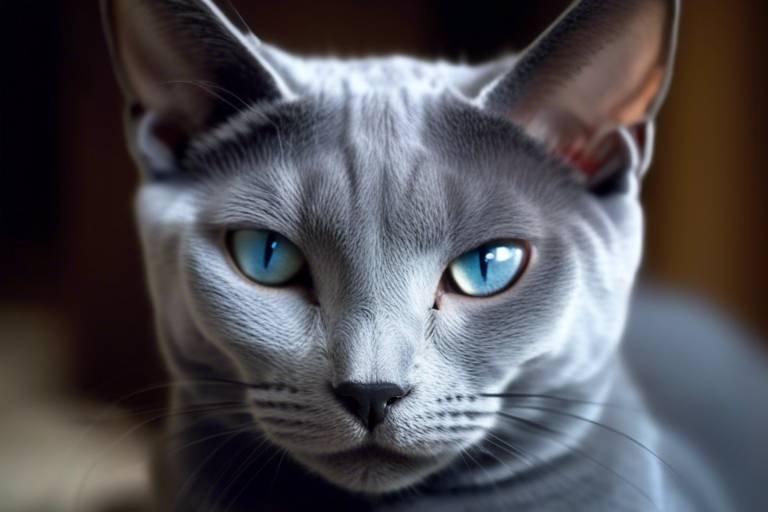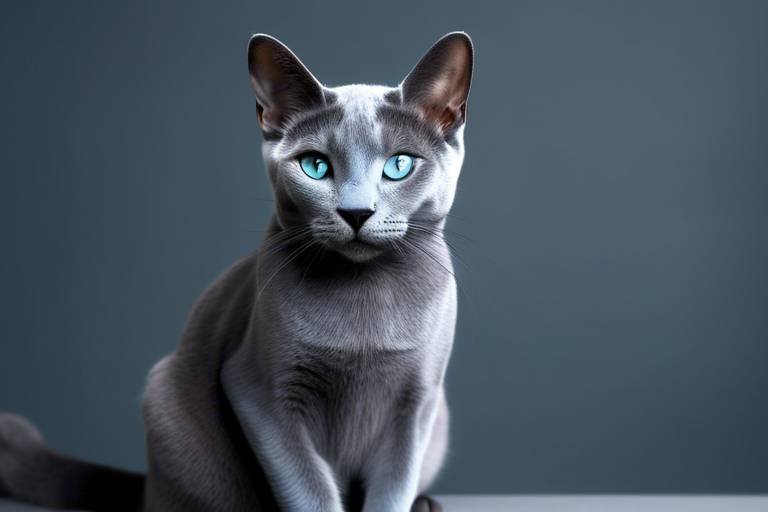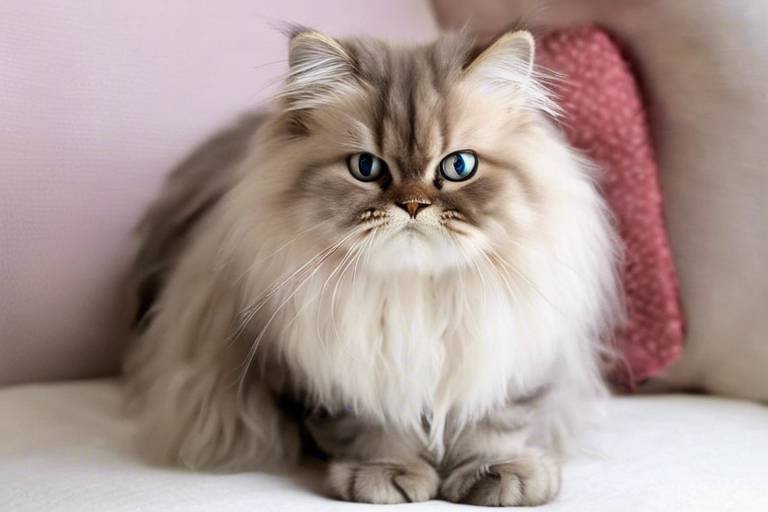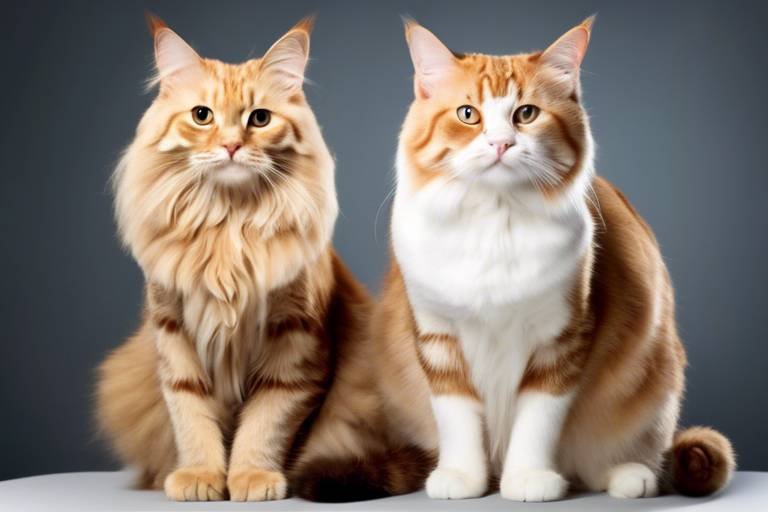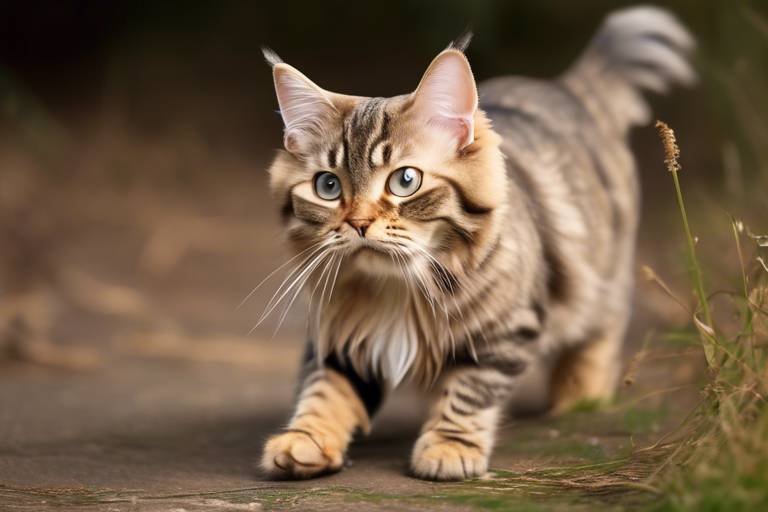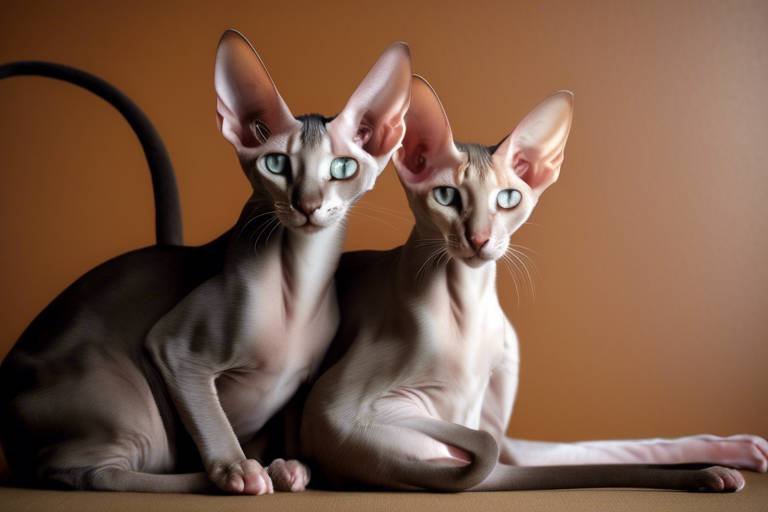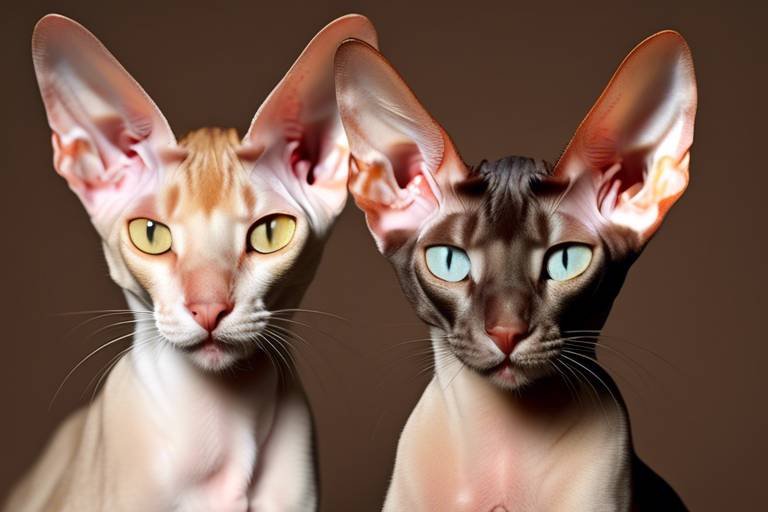Why the Russian Blue Cat Is So Popular
The Russian Blue cat has captured the hearts of many cat lovers around the globe, and it’s not hard to see why. With its stunning appearance and charming personality, this breed stands out in the feline world. Imagine a cat with a plush, silvery-blue coat that feels like velvet against your skin, paired with vivid green eyes that seem to hold a world of mystery. The allure of the Russian Blue is not just skin deep; it’s a combination of unique physical traits, a gentle temperament, intelligence, and a rich history that makes it a beloved companion.
One of the most striking features of the Russian Blue is undoubtedly its coat. The dense, double-layered fur is not only beautiful but also provides warmth, making these cats particularly suited for colder climates. Their eyes, a bright emerald green, create a stunning contrast against their fur, giving them a regal appearance that is hard to resist. This visual appeal is a significant factor in their popularity among cat enthusiasts and pet owners alike.
But looks aren’t everything, right? The Russian Blue cat is also known for its gentle and affectionate nature. These cats are often described as loyal companions who thrive on human interaction. They have a calm demeanor, making them perfect for families, singles, and seniors. Imagine coming home after a long day, and there’s your Russian Blue, purring softly as it curls up in your lap, offering comfort and companionship. This gentle temperament is a major reason why they are so cherished as family pets.
Another reason for their popularity is their intelligence and playfulness. Russian Blues are curious cats, always eager to explore their surroundings. They enjoy engaging in playtime activities and can even be trained to perform tricks! This combination of intelligence and playfulness means that they can keep you entertained for hours. Whether it’s chasing after a feather toy or solving a puzzle feeder, these cats have a knack for making everyday life a little more exciting.
For those who suffer from allergies, the Russian Blue cat is often a top choice. This breed produces lower levels of the Fel d 1 protein, which is known to trigger allergic reactions in some individuals. This characteristic makes them a suitable option for families who love cats but have members with sensitivities. Imagine being able to enjoy the companionship of a cat without the constant sneezing and itchy eyes—this is a game-changer for many!
Delving into the history of the Russian Blue cat reveals a rich tapestry that adds depth to its appeal. Believed to have originated in Russia, these cats were once favored by royalty and were often depicted in art and literature. Understanding their background not only enhances our appreciation for them but also connects us to their cultural significance. They have been admired for centuries, and their legacy continues to thrive today.
Adaptability is another trait that makes the Russian Blue a popular choice among pet owners. Whether you live in a bustling household filled with children or a quiet apartment, these cats can adjust to various living situations. Their flexible nature means they can easily fit into different lifestyles, making them suitable for a wide range of families. This adaptability is a key factor in their enduring popularity.
Caring for a Russian Blue cat is generally straightforward, but it does involve specific grooming needs due to their dense coat. Regular brushing is essential to keep their fur looking its best and to minimize shedding. Additionally, maintaining their health through a balanced diet and regular veterinary check-ups is crucial. Proper care ensures that your Russian Blue remains a happy and healthy companion for years to come.
Socialization is vital for Russian Blues, as they thrive on interaction. They enjoy spending time with their human families and can also get along well with other pets if introduced properly. Understanding their socialization needs is crucial for fostering a happy and well-adjusted feline friend. Imagine having a cat that not only loves to cuddle but also enjoys playing with your other pets—what a delightful household that would be!
Finally, the Russian Blue cat has made its mark in popular culture, appearing in various media forms that have contributed to its fame. From books to movies, these cats have charmed audiences worldwide, further solidifying their status as a beloved breed. Their presence in pop culture highlights their appeal and continues to inspire new generations of cat lovers.
- Are Russian Blue cats hypoallergenic? Yes, they produce lower levels of the Fel d 1 protein, making them a better choice for allergy sufferers.
- How much grooming do Russian Blue cats require? Regular brushing is recommended to maintain their dense coat and minimize shedding.
- What is the typical lifespan of a Russian Blue cat? On average, they live between 15 to 20 years with proper care.
- Do Russian Blue cats get along with other pets? Yes, they are generally friendly and can coexist with other animals if socialized properly.
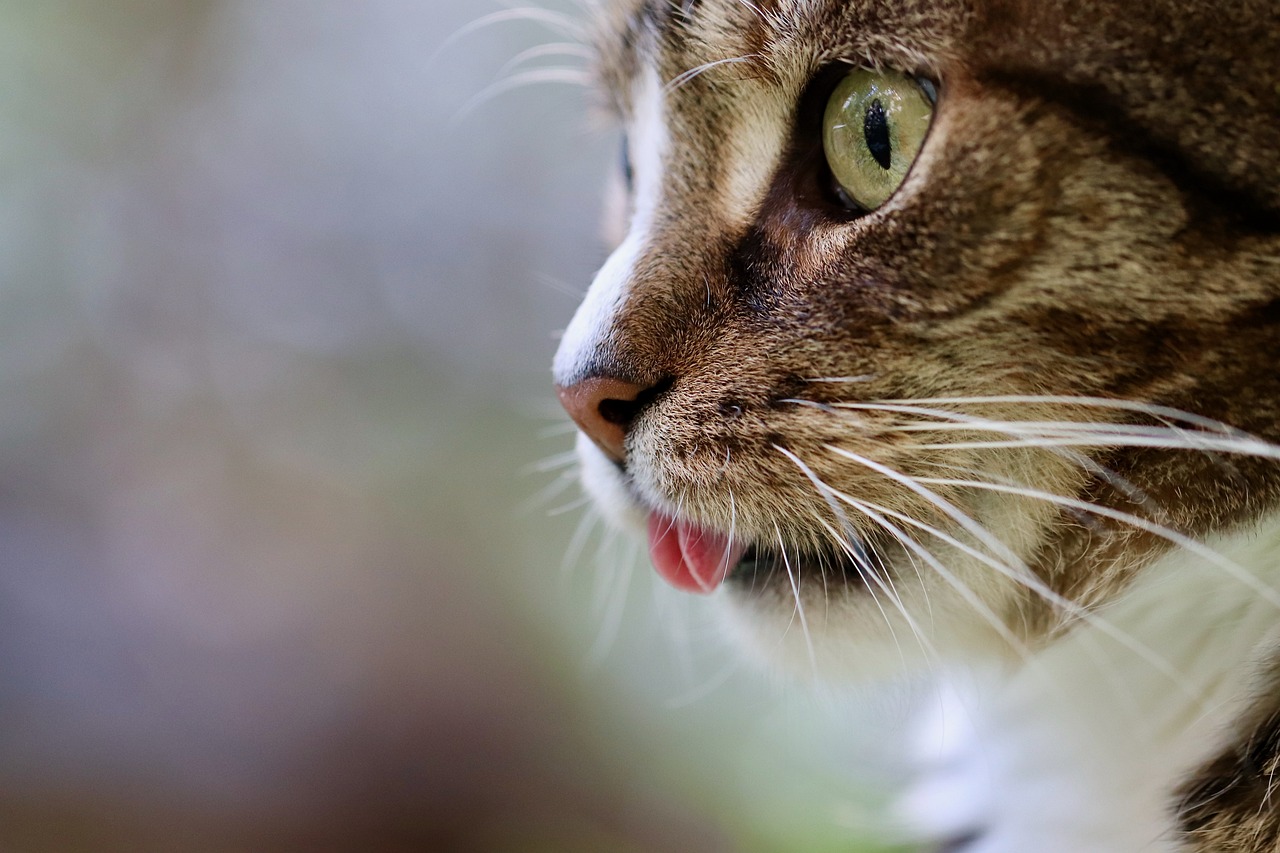
Unique Physical Traits
The Russian Blue cat is a breed that stands out in any crowd, and it’s hard not to be captivated by its enchanting appearance. With a coat that resembles the shimmering hues of a clear sky at dusk, the Russian Blue boasts a plush, silvery-blue coat that feels as luxurious as it looks. This unique coloration isn’t just for show; it’s one of the breed's most defining characteristics. The coat is dense and double-layered, providing not only warmth but also a striking visual appeal that catches the eye of anyone who encounters it.
But it’s not just the coat that makes this breed special. The vivid green eyes of the Russian Blue are nothing short of mesmerizing. They sparkle with intelligence and curiosity, drawing you in and making you feel like you’re looking into the soul of a wise companion. These eyes are framed by a beautifully proportioned head with a slightly rounded shape, giving the cat an elegant yet approachable appearance. Their ears are medium-sized and pointed, adding to their overall graceful silhouette.
When it comes to size, Russian Blues are typically medium-sized cats, with males generally weighing between 10 to 12 pounds and females slightly lighter, around 7 to 10 pounds. Their bodies are muscular and well-proportioned, which contributes to their agile and graceful movements. It’s like watching a dancer glide across the floor when they move. They possess a long, tapering tail that complements their overall appearance, making them look even more majestic.
In addition to their stunning looks, Russian Blues are known for their unique genetic traits. For instance, they have a lower incidence of certain genetic disorders compared to other breeds, which is a testament to their robust health. This combination of beauty and health makes them an appealing choice for many potential cat owners.
To sum it up, the unique physical traits of the Russian Blue cat can be highlighted in the following table:
| Physical Trait | Description |
|---|---|
| Coat Color | Silvery-blue, plush, and dense |
| Eye Color | Vivid green, sparkling with intelligence |
| Size | Medium-sized, with males weighing 10-12 lbs and females 7-10 lbs |
| Body Type | Athletic and muscular, with graceful movements |
| Tail | Long and tapering, adding to their elegance |
Ultimately, the Russian Blue cat is not just a pretty face; it’s a breed that combines stunning aesthetics with a rich genetic background, making it a favorite among cat lovers. Whether you’re drawn in by their striking coat or their captivating eyes, there’s no denying that the Russian Blue cat has a unique charm that makes it hard to resist.

Gentle Temperament
The Russian Blue cat is not just a pretty face; its is one of the key reasons why it has won the hearts of many cat lovers around the globe. Imagine coming home after a long day, and there waiting for you is a soft, grey-blue bundle of love, ready to curl up in your lap. This breed is known for its affectionate nature, making it an ideal companion for families, singles, and seniors alike. Unlike some cats that tend to be aloof or standoffish, Russian Blues are known for their calm demeanor and loyalty. They often form strong bonds with their human families, displaying an intuitive understanding of their owners' emotions.
One of the most delightful traits of the Russian Blue is its playfulness. While they enjoy their quiet moments, they also have a spirited side. Picture this: your Russian Blue suddenly pouncing on a feather toy, showcasing its agility and playful instincts. This mix of gentleness and playfulness makes them great companions for children, as they can engage in gentle play without being overly aggressive. However, it’s essential to teach kids how to interact with them respectfully, as these cats appreciate a calm environment.
Their sociable nature means they often get along well with other pets, too. If you have a dog or other cats, a Russian Blue can integrate smoothly into your existing pet family. They thrive on companionship and often seek out interaction with their human and animal friends. It’s not uncommon to find them following their owners from room to room, curious about what’s happening or simply wanting to be near their loved ones.
To sum it up, the Russian Blue cat is a perfect blend of affection and playfulness, making them an excellent choice for anyone looking to add a furry friend to their home. Their gentle temperament not only enhances their appeal but also ensures that they can adapt to various family dynamics. With a Russian Blue, you’re not just getting a pet; you’re gaining a loyal companion who can bring joy and warmth to your life.

Intelligence and Playfulness
This article explores the unique characteristics, history, and appeal of the Russian Blue cat, shedding light on why this breed has captured the hearts of many cat lovers worldwide.
The Russian Blue cat is renowned for its striking appearance, featuring a plush, silvery-blue coat and vivid green eyes. These distinctive traits contribute significantly to its popularity among cat enthusiasts.
Known for their affectionate and gentle nature, Russian Blue cats make wonderful companions. Their calm demeanor and loyalty to their owners enhance their appeal as family pets.
When it comes to intelligence, the Russian Blue cat is truly a standout. These felines are not just pretty faces; they possess a remarkable ability to learn and adapt. Imagine having a pet that can outsmart you at times! Their inquisitive nature means they love to explore their surroundings, often turning everyday objects into toys. A simple cardboard box can become a fortress, and a piece of string can transform into a captivating prey. Playfulness is a hallmark of this breed, and they thrive on interactive playtime with their humans.
Moreover, Russian Blues are quick learners. They can be taught a variety of tricks and commands, which can be a delightful experience for both the cat and its owner. Owners often find themselves amazed by how their Russian Blue can fetch a toy or respond to its name. This intelligence not only makes them engaging companions but also enriches the bond between cat and owner. To keep their minds sharp, it's essential to provide them with stimulating toys and puzzles that challenge their intellect.
In addition to their smarts, their playful nature is infectious. They often enjoy games that involve chasing and pouncing, reminiscent of their wild ancestors. Whether it's a laser pointer dancing across the floor or a feather toy dangling from a string, you'll find your Russian Blue eagerly participating in these activities. This playful spirit can be a source of endless entertainment, making them a joy to have around. It's no wonder that many cat owners describe their Russian Blues as clowns in fur coats—always ready to entertain and bring smiles to their households.
For allergy sufferers, the Russian Blue cat is often a preferred choice due to its lower levels of the Fel d 1 protein, which can trigger allergic reactions in some individuals.
The Russian Blue cat has a rich history, believed to have originated in Russia. Understanding its background adds depth to the appreciation of this beloved breed.
This breed is known for its adaptability, thriving in various living situations, whether in a bustling household or a quieter environment. Their flexibility makes them suitable for many families.
Caring for a Russian Blue cat involves specific grooming needs due to their dense coat. Proper care ensures their health and maintains their beautiful appearance.
Russian Blues enjoy social interactions, both with humans and other pets. Understanding their socialization needs is crucial for fostering a happy and well-adjusted feline friend.
The Russian Blue cat has made appearances in various forms of media, contributing to its popularity. Exploring these cultural references highlights the breed's charm and appeal in society.
- Are Russian Blue cats good for families? Yes, their gentle temperament and playful nature make them excellent companions for families.
- Do Russian Blue cats require a lot of grooming? While their dense coat does require regular grooming, it is manageable with a weekly brush.
- How can I keep my Russian Blue mentally stimulated? Engage them with interactive toys, puzzles, and training sessions to keep their minds active.
- Are Russian Blue cats hypoallergenic? They produce less Fel d 1 protein, making them a better option for allergy sufferers, but they are not completely hypoallergenic.
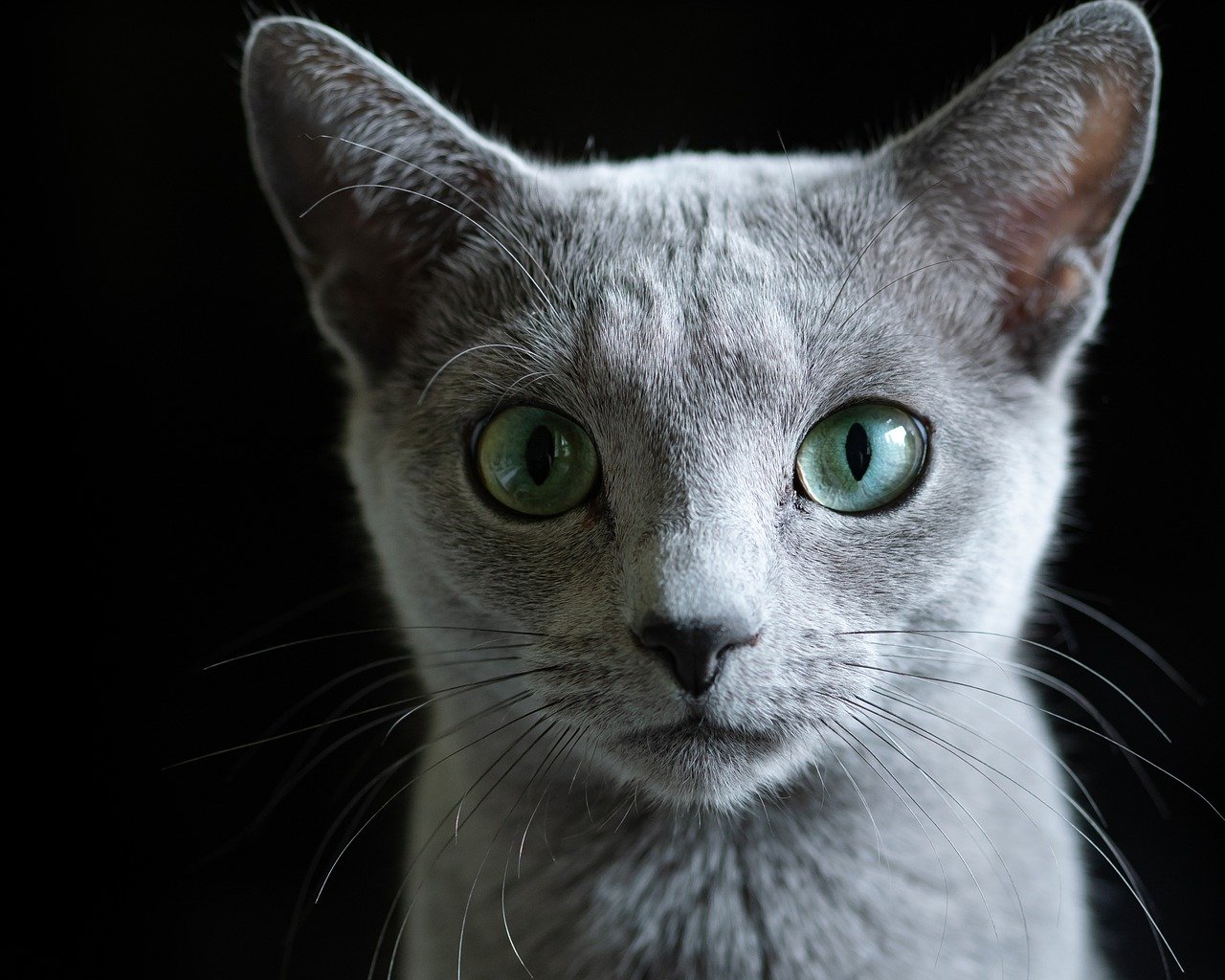
Low-Allergen Breed
The Russian Blue cat is often celebrated not just for its stunning looks and charming personality, but also for being a . For many potential cat owners, the prospect of allergies can be a significant barrier to bringing a feline friend into their home. Allergies to cats typically stem from a protein called Fel d 1, which is found in cat saliva, skin, and dander. However, Russian Blues are known to produce lower levels of this protein compared to other breeds, making them an appealing option for those who suffer from allergies.
Imagine being able to enjoy the companionship of a cat without the constant sneezing and itchy eyes that often accompany pet ownership! This unique trait allows many people to experience the joy of having a pet while minimizing the risk of allergic reactions. It's like having your cake and eating it too, right? Additionally, the Russian Blue's dense, plush coat helps to trap dander and hair, which can further reduce the spread of allergens in your home.
To illustrate this point, let's take a look at a simple comparison of allergen levels in various cat breeds:
| Cat Breed | Fel d 1 Protein Level | Allergen Potential |
|---|---|---|
| Russian Blue | Low | Low |
| Siamese | Moderate | Medium |
| Persian | High | High |
| Domestic Shorthair | Varies | Varies |
This table clearly shows that the Russian Blue stands out as a safer choice for allergy sufferers. Of course, it’s essential to remember that individual reactions can vary. Some people may still experience allergies even with low-allergen breeds, so it's always a good idea to spend time with a breed before making a commitment.
Moreover, proper grooming and cleaning practices can further help minimize allergens in your environment. Regular brushing of your Russian Blue can help reduce loose fur and dander, while frequent cleaning of your home can keep allergens at bay. Think of it as creating a little oasis of comfort, where both you and your furry friend can coexist happily.
In summary, the Russian Blue cat's low-allergen nature makes it an excellent choice for many families, especially those who may have previously thought that cat ownership was out of reach due to allergies. With their beautiful appearance, gentle temperament, and reduced allergenic properties, it's no wonder that these cats have captured the hearts of so many.
- Do Russian Blue cats really produce less Fel d 1?
Yes, Russian Blue cats are known to produce lower levels of this allergenic protein compared to many other breeds, making them a better option for allergy sufferers. - Are there any specific care tips for Russian Blue cats?
Regular grooming is essential to maintain their coat and minimize allergens. Additionally, keep your home clean to help reduce dander buildup. - Can I still be allergic to a Russian Blue?
While they are known to be low-allergen, individual reactions can vary. It's best to spend time with the breed before bringing one home. - What other breeds are considered low-allergen?
Other low-allergen breeds include the Siberian, Balinese, and Devon Rex.
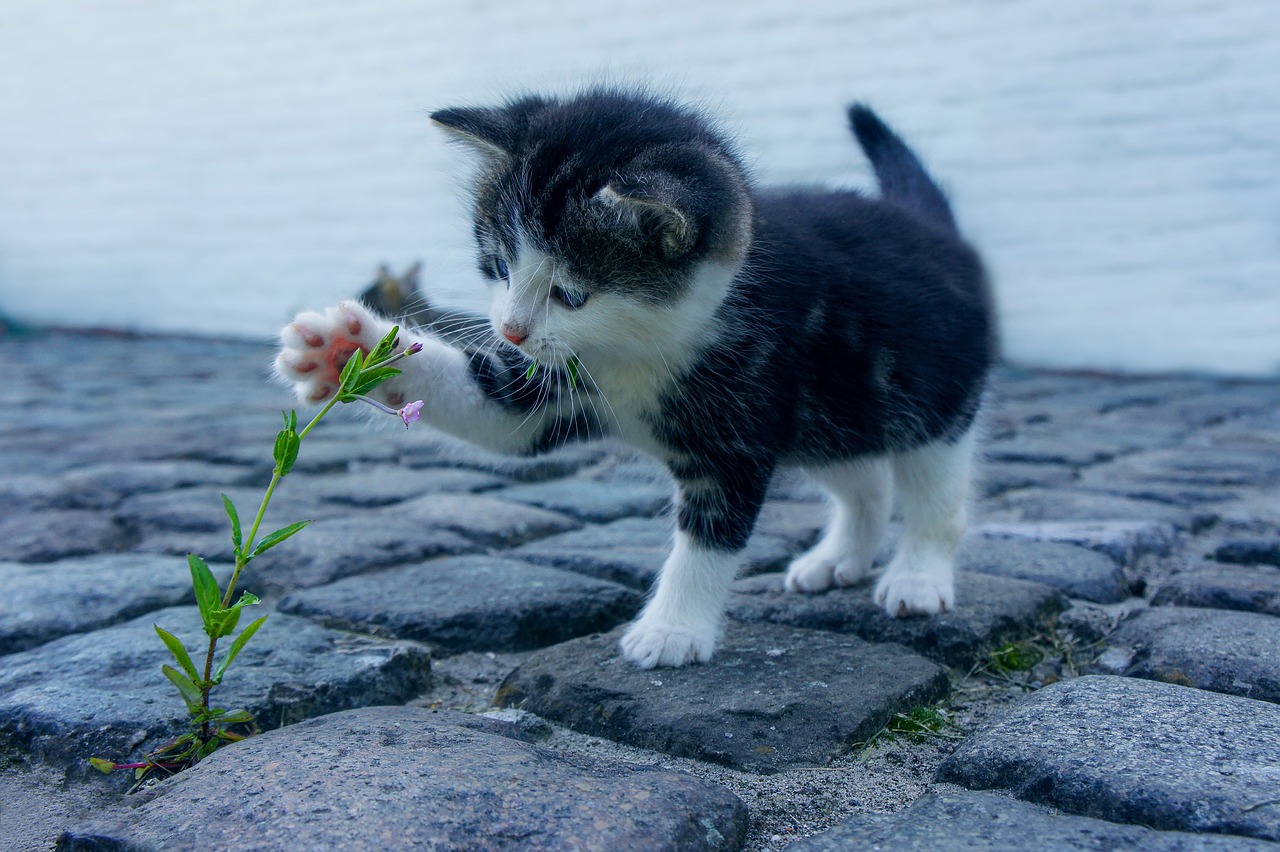
Historical Significance
The Russian Blue cat is not just a pretty face; it carries with it a rich tapestry of history that dates back centuries. Believed to have originated in the cold, vast landscapes of Russia, this breed's lineage is shrouded in mystery and folklore. Some theories suggest that these cats were brought to Europe by sailors in the 1860s, who admired their stunning appearance and gentle demeanor. Imagine a time when these majestic creatures were the companions of Russian aristocrats, roaming the grand halls of palaces, their silvery-blue coats shimmering in candlelight.
Historically, the Russian Blue was often associated with good fortune and was believed to bring prosperity to its owners. This reputation made them highly sought after, leading to their presence in various cultural narratives. For instance, during the 19th century, these cats were featured in numerous paintings and literary works, symbolizing grace and elegance. Their unique coat color was often likened to the twilight sky, a beautiful metaphor that captures the imagination and adds to their allure.
In addition to their role in art and literature, Russian Blues were also valued for their hunting skills. They were adept at controlling rodent populations in homes and barns, making them not only cherished pets but also practical companions. This dual purpose further cemented their place in households across Russia and beyond.
As the years passed, the breed gained international recognition, particularly during cat shows in the early 20th century. The Russian Blue's distinct appearance and charming personality quickly won over judges and spectators alike. Today, this breed is celebrated worldwide, not just for its beauty but also for its rich heritage that resonates with cat lovers everywhere.
To truly appreciate the Russian Blue, one must understand its historical significance, which adds depth to its character. This breed embodies a blend of culture, art, and practicality, making it a remarkable companion throughout the ages. So, the next time you gaze into the striking green eyes of a Russian Blue, remember that you're looking at a living piece of history.
- What is the origin of the Russian Blue cat?
The Russian Blue cat is believed to have originated in Russia, with theories suggesting they were brought to Europe by sailors in the 1860s.
- Are Russian Blue cats hypoallergenic?
Yes, Russian Blue cats produce lower levels of the Fel d 1 protein, which can trigger allergies, making them a preferred choice for allergy sufferers.
- What is the temperament of a Russian Blue cat?
Russian Blue cats are known for their gentle and affectionate nature, making them wonderful companions for families.
- How should I care for a Russian Blue cat?
Caring for a Russian Blue involves regular grooming to maintain their dense coat and ensuring they have social interactions to keep them happy.
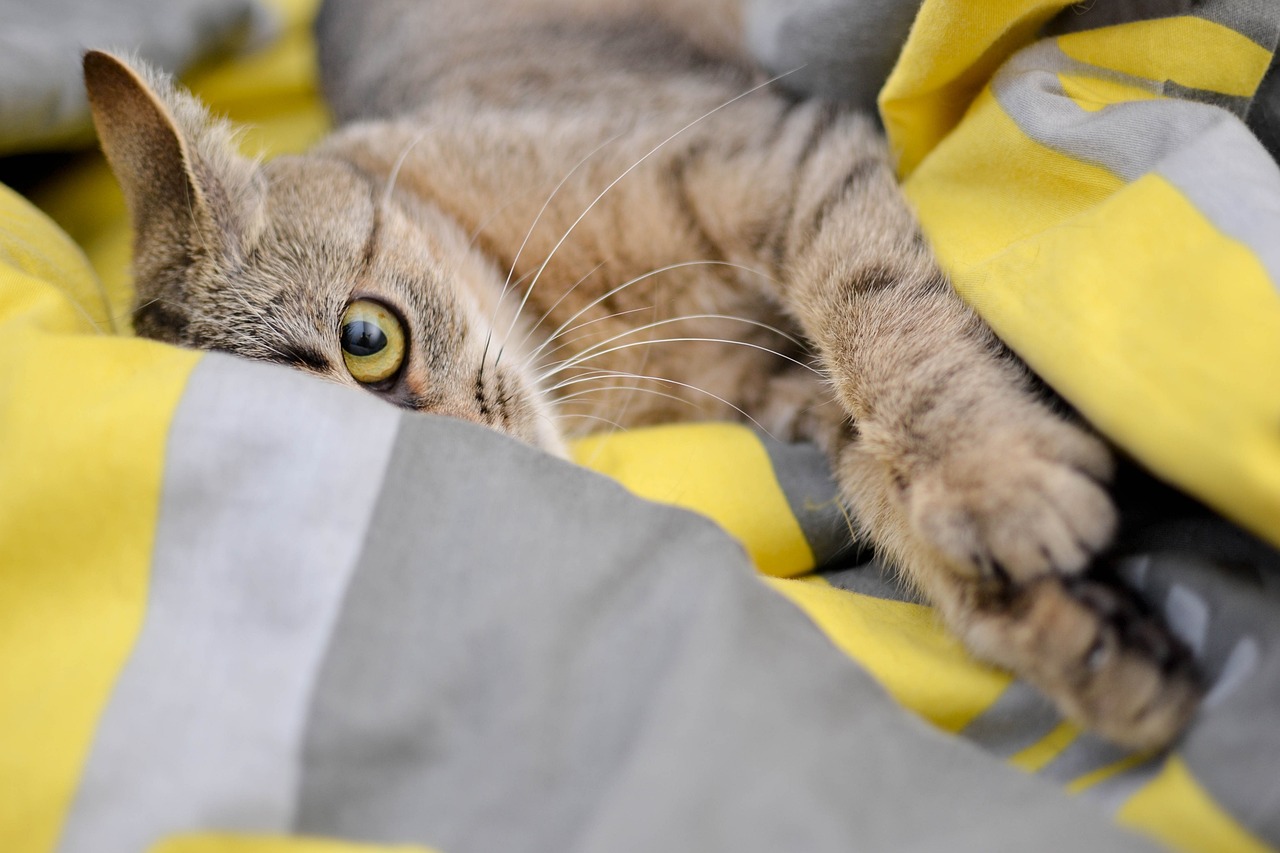
Adaptability to Environments
The Russian Blue cat is not just a pretty face; it possesses an incredible ability to adapt to various living environments, making it a favorite among cat lovers around the globe. Whether you live in a cozy apartment in the city or a spacious house in the suburbs, this breed can thrive in almost any setting. Imagine a cat that can seamlessly transition from the hustle and bustle of a busy household to the serene atmosphere of a quiet home. That's the charm of the Russian Blue.
One of the reasons for their adaptability is their calm and composed nature. Unlike some breeds that can become anxious or stressed in new situations, Russian Blues tend to take changes in stride. They are observant and curious, often taking their time to explore their new surroundings before fully engaging. This quality makes them excellent companions for families with children, as well as for individuals who might have a more laid-back lifestyle. They have an innate ability to sense the mood of their environment and adjust their behavior accordingly.
Moreover, Russian Blues are known for their flexibility when it comes to social interactions. They can be just as happy playing with children as they are lounging quietly by an adult's side. This breed is not overly demanding of attention but enjoys being included in family activities. Their gentle demeanor allows them to coexist peacefully with other pets, making them suitable for multi-pet households. For instance, if you have a dog or another cat, the Russian Blue is likely to adapt well, often forming bonds that are both affectionate and playful.
In terms of space, Russian Blues don't require a mansion to be happy. They can find joy in a small nook or cranny, provided they have a cozy spot to curl up in and some toys to keep them entertained. Their playfulness can be satisfied with simple items like a string or a feather toy, which makes them easy to please. This adaptability also extends to their need for exercise; a few play sessions a day can keep them fit and happy, regardless of the size of your living space.
In conclusion, the adaptability of the Russian Blue cat is one of its most appealing traits. They are not just beautiful; they are also incredibly versatile companions that can fit into a variety of lifestyles. Whether you’re a busy professional, a family with children, or someone living alone, a Russian Blue can bring joy and companionship into your life without demanding too much in return. So, if you're considering bringing a feline friend into your home, the Russian Blue might just be the perfect match for your environment.
- Are Russian Blue cats good for families? Yes, they are known for their gentle temperament and can adapt well to family life.
- Do Russian Blues require a lot of grooming? Their dense coat does require regular grooming to prevent matting, but they are relatively low-maintenance.
- Can Russian Blue cats live with other pets? Absolutely! They are social and can get along well with other animals when properly introduced.
- Are Russian Blue cats hypoallergenic? While no cat is completely hypoallergenic, Russian Blues produce lower levels of the Fel d 1 protein, which may help allergy sufferers.
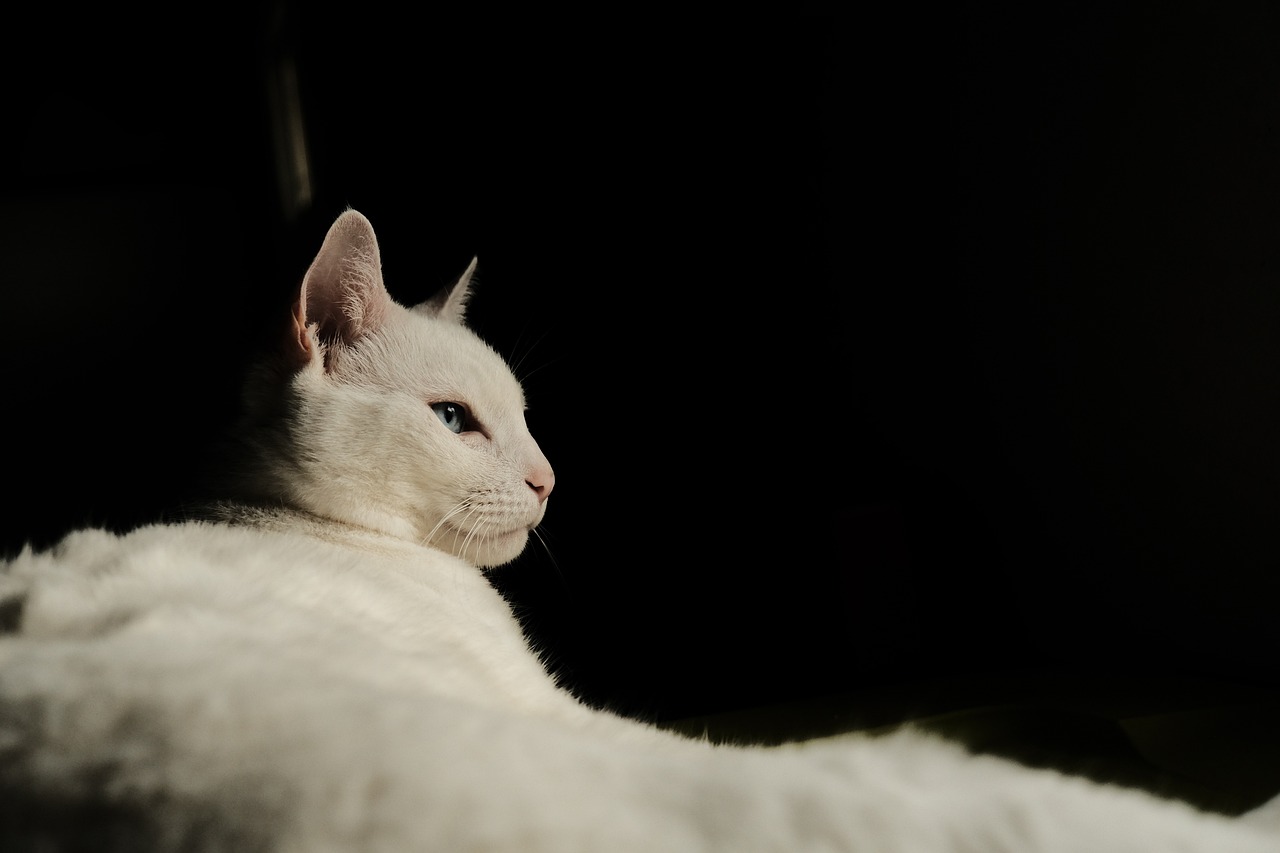
Care and Maintenance
Caring for a Russian Blue cat is not just about feeding and providing shelter; it involves a comprehensive approach that ensures their health and happiness. With their stunning silvery-blue coats and those captivating green eyes, these felines require specific grooming to maintain their luxurious appearance. Regular brushing is essential, ideally a couple of times a week, to prevent matting and reduce shedding. Their thick fur can trap dirt and debris, so a gentle brush helps keep their coat clean and shiny.
Beyond grooming, nutrition plays a crucial role in the overall well-being of your Russian Blue. A balanced diet rich in high-quality protein is vital for their energy levels and coat health. Look for cat food that lists meat as the primary ingredient and contains essential fatty acids, vitamins, and minerals. Remember, these cats can be prone to obesity if overfed, so monitoring their weight and adjusting portion sizes accordingly is important. You might want to consider consulting with your veterinarian to determine the best diet tailored to your cat’s specific needs.
Another aspect of care involves regular veterinary check-ups. Routine visits help catch any health issues early on, ensuring that your Russian Blue remains in tip-top shape. Vaccinations, parasite control, and dental care are essential components of their healthcare regimen. Don't forget to keep an eye on their dental hygiene, as Russian Blues can be prone to dental issues. Providing dental treats or using special cat toothpaste can be a fun way to keep their teeth healthy.
Moreover, Russian Blues are known for their social nature; they thrive on interaction and engagement. Providing them with toys, scratching posts, and opportunities for playtime can significantly enrich their lives. Engaging them in interactive play not only keeps them physically active but also stimulates their minds. Consider rotating toys to keep their interest piqued, and don’t underestimate the value of simple items like cardboard boxes or paper bags—they can provide hours of entertainment!
Lastly, creating a safe and comfortable environment is paramount. Russian Blues adapt well to various living situations, but they appreciate having a cozy spot to call their own. Whether it’s a warm bed by the window or a quiet corner with a soft blanket, ensuring they have a space where they feel secure can contribute to their overall happiness. Remember, a happy cat is a healthy cat, and investing time in their care and maintenance is well worth the effort.
- How often should I groom my Russian Blue? Ideally, you should brush their coat at least once a week to keep it clean and free of mats.
- What type of food is best for a Russian Blue cat? Look for high-quality cat food with meat as the primary ingredient, rich in protein and essential nutrients.
- Do Russian Blue cats need special veterinary care? Regular check-ups are important, just like any other breed. Keep up with vaccinations and dental care.
- Are Russian Blues good with children and other pets? Yes, they are generally known for their gentle temperament and can get along well with kids and other animals.
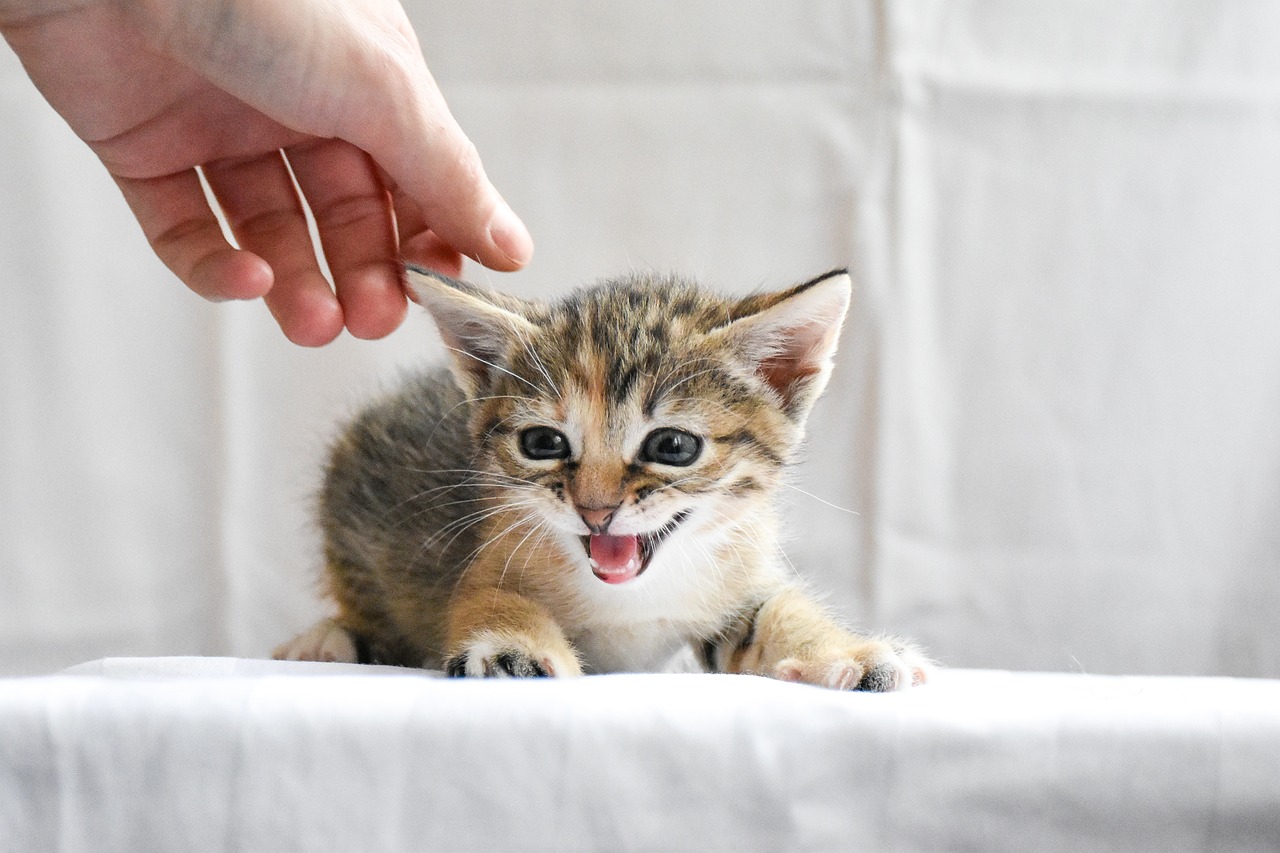
Socialization Needs
When it comes to the Russian Blue cat, understanding their socialization needs is key to ensuring they thrive as happy and well-adjusted companions. These felines are not just cute faces with plush coats; they possess a gentle and affectionate nature that craves interaction. Imagine a friend who always wants to cuddle and play—this is what a Russian Blue can be like! They enjoy the company of their human family members and often form strong bonds with them.
Russian Blues are known to be quite social, yet they also appreciate their alone time. It's a delicate balance! They thrive in environments where they can engage with their owners, but they also need a cozy corner to retreat to when they want some peace. This makes them adaptable to different living situations, whether you live in a busy household or a quieter space. If you have other pets, Russian Blues can get along well with them, but introducing them properly is essential to avoid any territorial disputes. Think of it like a new kid joining a playground—if they’re introduced properly, they’ll fit right in!
Here are a few tips to enhance your Russian Blue's social experience:
- Interactive Play: Engage them with toys that stimulate their hunting instincts. Feather wands and laser pointers can provide hours of entertainment.
- Gentle Introductions: If you have other pets, introduce them slowly. This helps the Russian Blue feel secure and reduces stress.
- Quality Time: Spend time cuddling or simply being near them. Russian Blues love the warmth of your presence.
Moreover, exposing your Russian Blue to various environments and experiences can help them become more adaptable. Whether it’s meeting new people or exploring different rooms in your home, each experience enriches their social skills. Just like a child learns from playing with others, your Russian Blue will grow more confident and well-rounded through positive interactions. Remember, a well-socialized Russian Blue is not just a better pet; they are also a source of joy and companionship that can light up your life!
Q: How can I tell if my Russian Blue is feeling social?
A: Look for signs like purring, rubbing against you, or following you around. If they seek your attention, they’re likely feeling social!
Q: Can Russian Blues get along with other pets?
A: Yes, they can! With proper introductions and patience, they can coexist peacefully with other cats and even dogs.
Q: What should I do if my Russian Blue seems shy?
A: Give them time and space. Encourage social interaction with gentle play and treats, but don’t force them to engage until they’re ready.
Q: How important is socialization for a Russian Blue?
A: Very important! Socialization helps them develop confidence and reduces anxiety, making them happier companions.
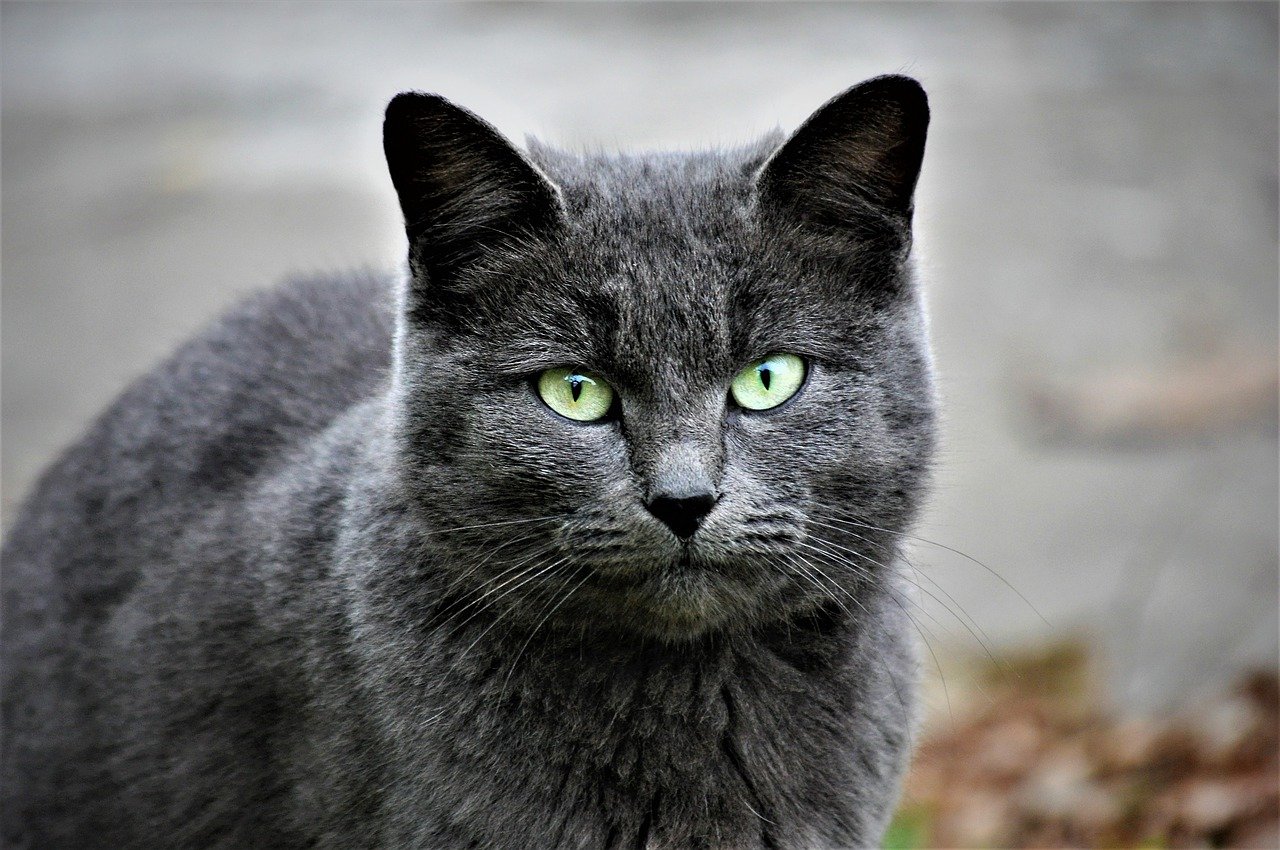
Popularity in Pop Culture
The Russian Blue cat has not only captured the hearts of pet owners but has also made significant strides in popular culture, appearing in various media forms that highlight its unique charm and elegance. Whether it's a beloved character in a movie or an Instagram sensation, these cats have a knack for stealing the spotlight. One notable instance is in the animated film "The Aristocats," where a character resembling a Russian Blue showcases their striking blue-gray fur and captivating green eyes, endearing them to audiences of all ages.
Moreover, the Russian Blue has been featured in numerous books and television shows, often symbolizing grace and intelligence. Their portrayal in pop culture has contributed to a growing fascination with the breed, making them a desirable choice for those looking to adopt a feline friend. The allure of these cats is further amplified by their presence in social media, where cat influencers showcase their Russian Blues in various adorable scenarios, from cozy naps to playful antics. This trend not only highlights their beauty but also emphasizes their playful and affectionate nature.
Interestingly, the Russian Blue's popularity has been fueled by their association with luxury and elegance. Many celebrities have been spotted with these exquisite cats, further elevating their status. For instance, famous personalities like Kristen Stewart and Ricky Gervais have shared their love for Russian Blues on social platforms, showcasing their pets as part of their daily lives. This connection with high-profile figures has helped to cement the breed's status as a symbol of sophistication.
Additionally, the Russian Blue's unique traits have inspired various merchandise, from plush toys to art prints, allowing fans to celebrate their love for this breed in creative ways. The cat's striking appearance and gentle demeanor make it a favorite subject for artists and photographers alike, resulting in a plethora of artwork that captures the essence of these beautiful felines.
In conclusion, the Russian Blue cat's presence in pop culture is a testament to its widespread appeal. From movies and television shows to social media and celebrity endorsements, this breed continues to enchant people around the world. Their unique blend of beauty, intelligence, and a gentle temperament makes them not just a pet but a cultural icon that resonates with many.
- What is the average lifespan of a Russian Blue cat?
The average lifespan is about 15 to 20 years, depending on their care and health. - Do Russian Blue cats require special grooming?
While they have a dense coat, regular brushing is sufficient to keep their fur healthy and free from mats. - Are Russian Blue cats good with children?
Yes, their gentle nature makes them excellent companions for children, as they are typically patient and affectionate. - How can I tell if my cat is a Russian Blue?
Look for their distinct silvery-blue coat, green eyes, and a well-built, muscular body.
Frequently Asked Questions
- What are the unique physical traits of the Russian Blue cat?
The Russian Blue cat is famous for its stunning appearance, characterized by a plush, silvery-blue coat that feels incredibly soft to the touch. Its vivid green eyes are striking and captivating, making this breed a visual delight for cat lovers everywhere.
- Are Russian Blue cats good companions?
Absolutely! Russian Blue cats are known for their gentle and affectionate nature. They bond closely with their owners and are often described as loyal companions, making them ideal pets for families or individuals looking for a loving feline friend.
- How intelligent are Russian Blue cats?
These cats are highly intelligent and curious. They enjoy engaging in play and can even learn tricks, keeping their owners entertained for hours. Their playful antics and ability to solve problems make them a joy to have around.
- Do Russian Blue cats cause allergies?
For those who suffer from allergies, the Russian Blue cat is often a better choice compared to other breeds. They produce lower levels of the Fel d 1 protein, which is known to trigger allergic reactions, making them more suitable for allergy sufferers.
- What is the history of the Russian Blue cat?
The Russian Blue cat has a rich and fascinating history, believed to have originated in Russia. This background adds depth to the breed's appeal and helps cat lovers appreciate their unique heritage.
- Can Russian Blue cats adapt to different environments?
Yes, Russian Blue cats are known for their adaptability. They thrive in various living situations, whether it's a bustling household with children or a quieter home. Their flexibility makes them suitable companions for many different families.
- What are the grooming needs of a Russian Blue cat?
Caring for a Russian Blue involves regular grooming due to their dense coat. Brushing them a few times a week helps to keep their fur healthy and shiny, while also reducing shedding and preventing matting.
- Do Russian Blue cats enjoy social interactions?
Yes, they do! Russian Blue cats thrive on social interactions, both with their humans and other pets. Understanding their social needs is essential for fostering a happy and well-adjusted feline friend.
- How has the Russian Blue cat appeared in pop culture?
The Russian Blue cat has made several appearances in various forms of media, from movies to books, which has contributed to its popularity. These cultural references highlight the breed's charm and appeal, making them even more beloved by society.

